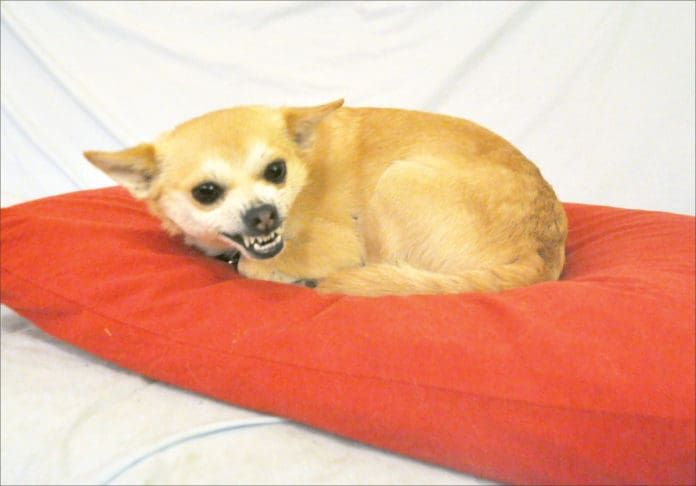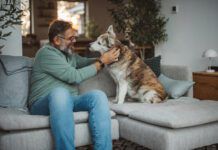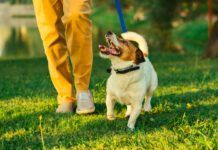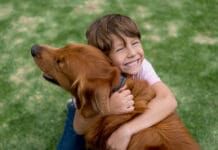If you’ve never had to deal with that alarming moment when your beloved dog snaps at a guest in your home, you are fortunate. I hope you never do. But just in case, it’s good to know that, first, you’re not alone – lots of dogs have snapped at guests in their homes (or worse!). Second, it’s not the end of the world; it doesn’t mean you need to euthanize your dog and it doesn’t mean your dog will inevitably maul someone. It is, however, an important heads-up for you. How you handle the situation can often determine if your dog’s aggression toward visitors escalates or diminishes. So if it happens, here’s what you need to do:

1. Calmly remove your dog from the situation.
No scolding, no yelling, and no physical punishment. Gently take hold of her collar, lead her to a quiet room away from the action, and leave her there with a bowl of water and a chew toy. Your visitor may expect you to punish your dog, even “alpha roll” her, if he’s watched a certain television show. Don’t let your guest pressure you into doing something you know is wrong and that you will regret later. Your dog is your dog!
2. Calmly apologize to your guest.
Of course you will make sure your guest wasn’t injured (“snap” implies no actual contact). But then it will suffice to say, calmly, “I am sorry Missy snapped at you.” Your guest doesn’t need an anxious, shrill litany of “Omigosh Missy has never, ever done anything like that before! I am so, so sorry she did that to you! I can’t imagine what got into her! I hope we don’t have to get rid of her!” Histrionics will inflame the situation and can turn a minor incident into a major event.
3. Ask questions about the incident.
If this is new behavior on Missy’s part, you want to identify what might have happened so you can take steps to make sure it doesn’t happen again. (If it is not new behavior, shame on you for allowing it to happen again!) Quietly ask your guest some version of these questions in a non-accusing manner:
– Can you tell me what happened?
– What were you doing when she snapped at you?
– What was she doing just before she snapped at you?
– Did you see any signs that she wasn’t comfortable with you?
4. Make notes of the dog snapping.
As soon as you are able, write down everything you can think of about the incident. Describe the person she snapped at in detail – age, gender, race, size, unusual features (beard, glasses, etc.), what the person was wearing, if there was anything in his hands, and yes, what he was doing.
Include information about where the incident happened, the weather, and any unusual occurrences in the dog’s world over the previous two days (for example, she killed a bunny yesterday in the yard, there was a thunderstorm last night, she didn’t eat her breakfast this morning). Because stress is cumulative and aggression is caused by stress, this may help you come to understand why this out-of-character behavior happened. If additional incidents do occur in the future, you will have a good record to share with the behavior professional you enlist to help you.
5. Closely monitor your dog’s behavior around future guests and other humans in any context.
Watch carefully for signs that she is stressed, including the dog lowering her body and tail, turning her head, averting her eyes, pinning her ears back, panting, licking her lips, avoiding contact, rolling over, and more. (For more information about recognizing signs of stress in dogs, see “Listen by Looking,” WDJ August 2011.) Manage her carefully to avoid putting other guests at risk. Remove her to a safe place if she appears anything but relaxed and happy with visitors. If you continue to see signs of stress or distress around visitors, keep taking detailed notes, and seek the assistance of a positive behavior professional who can help you help her become safer and more comfortable with humans.
Pat Miller, CBCC-KA, CPDT-KA, is WDJ’s Training Editor. Pat is also the author of many books on positive training.







I have a home childcare business. My dog is a rescue and we have had her for over a year now. She loves the kids and is protective of them. I recently got 2 new children and 2 days in a row, she has snapped at the dad, each time he was hugging one of his kids. I am shocked. How do I stop this?